MSRP (*Base Edition)
Hybrid REEV | SUV | 200KM
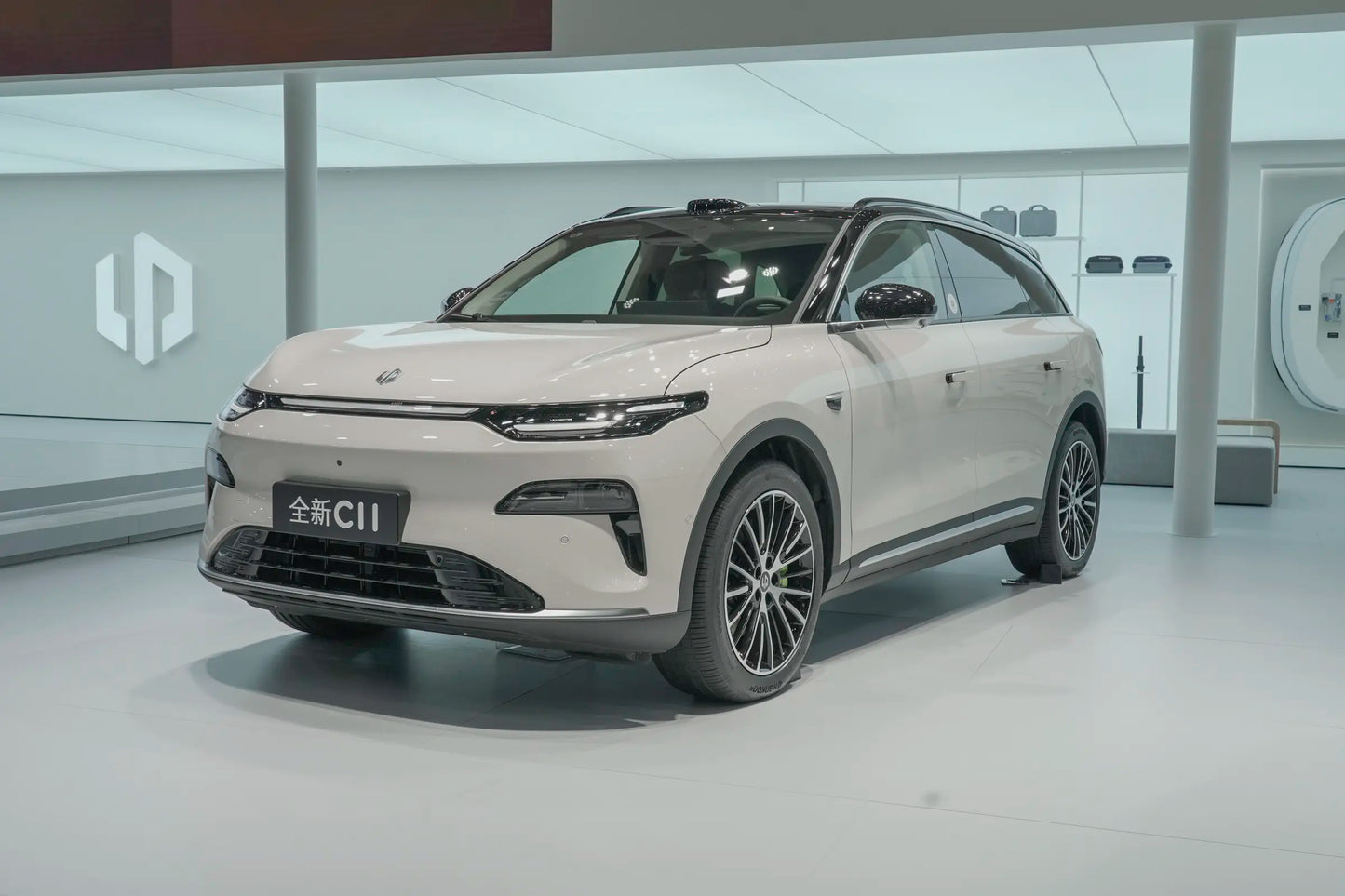

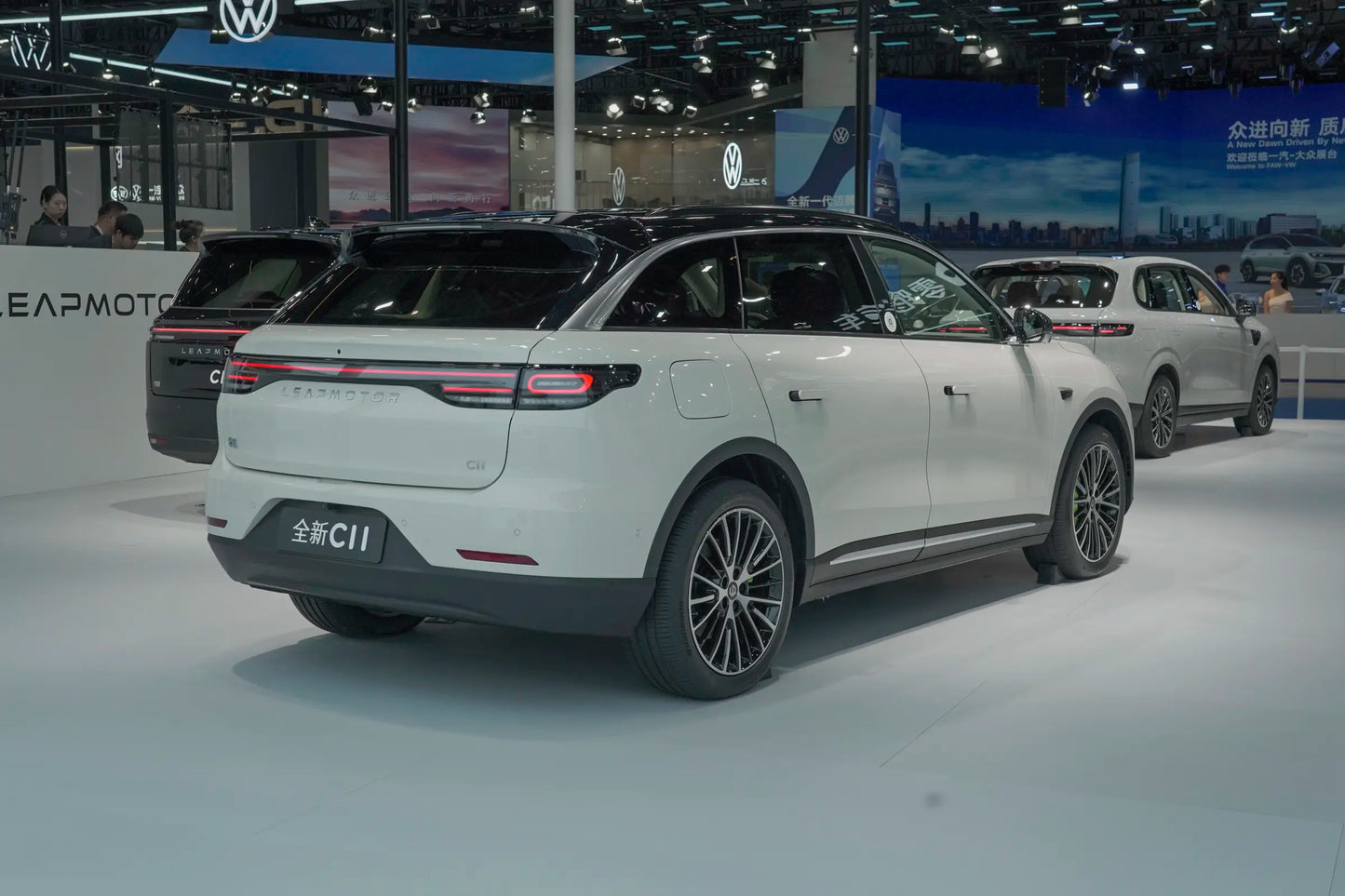
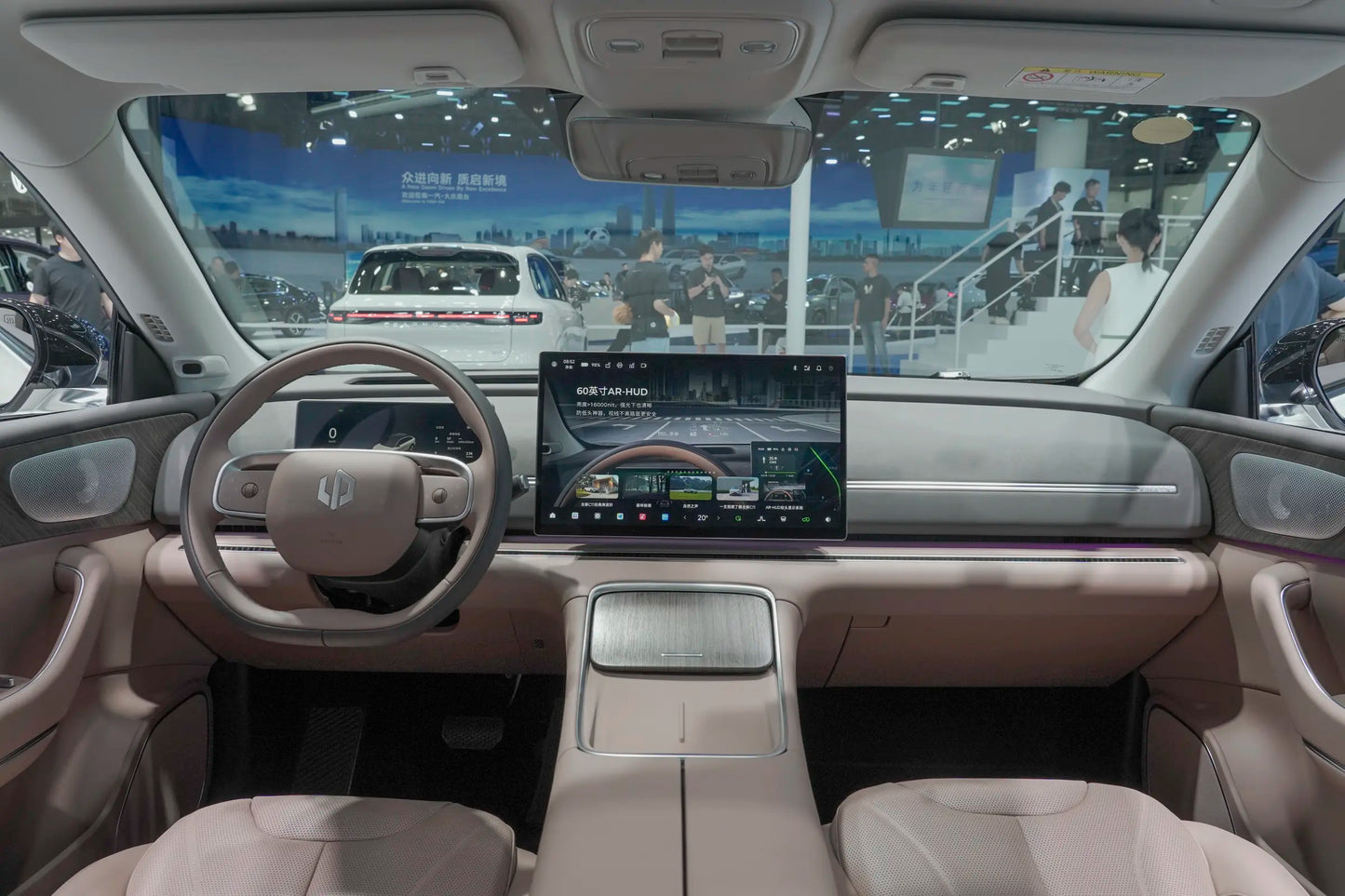
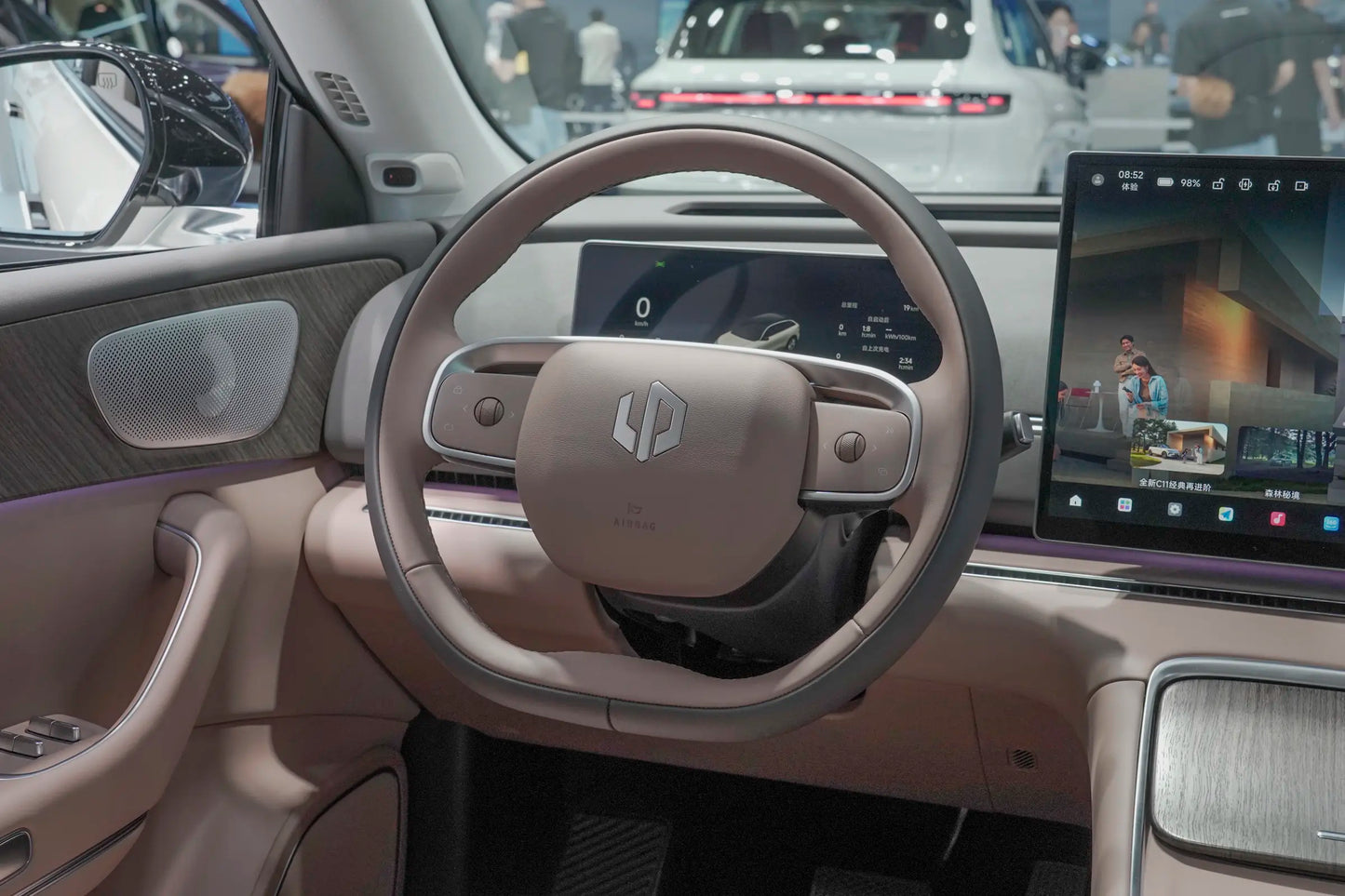
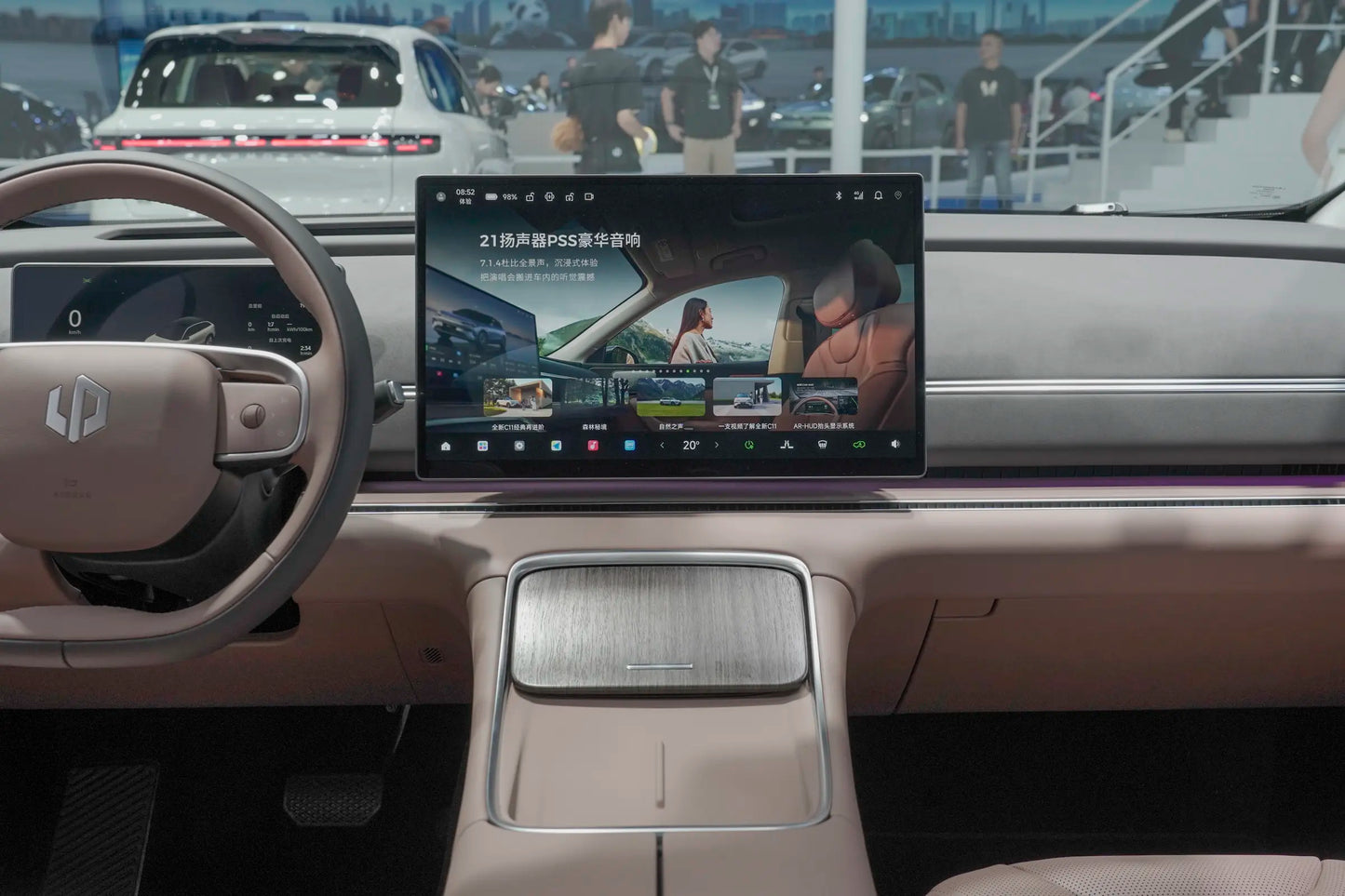
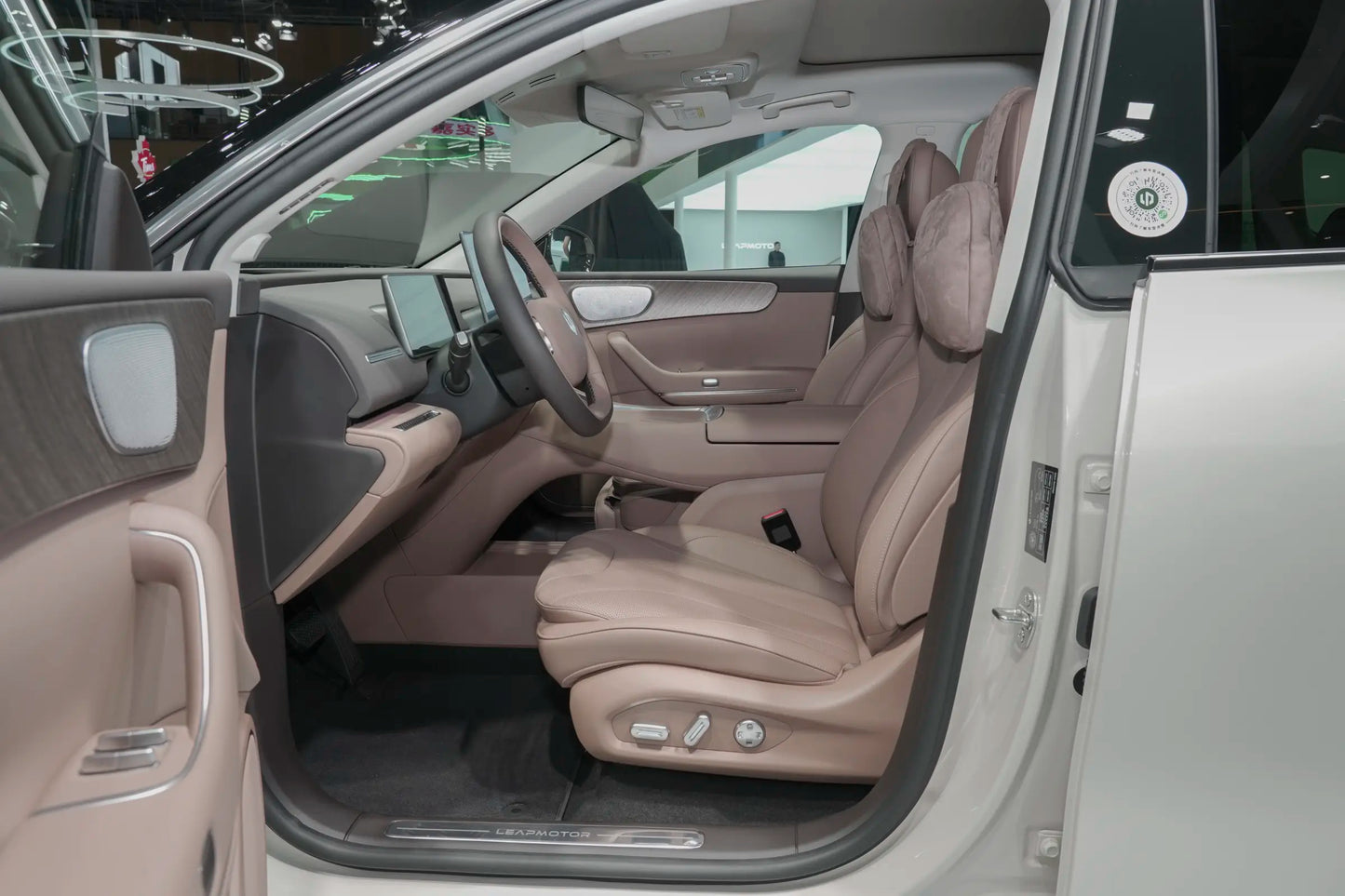
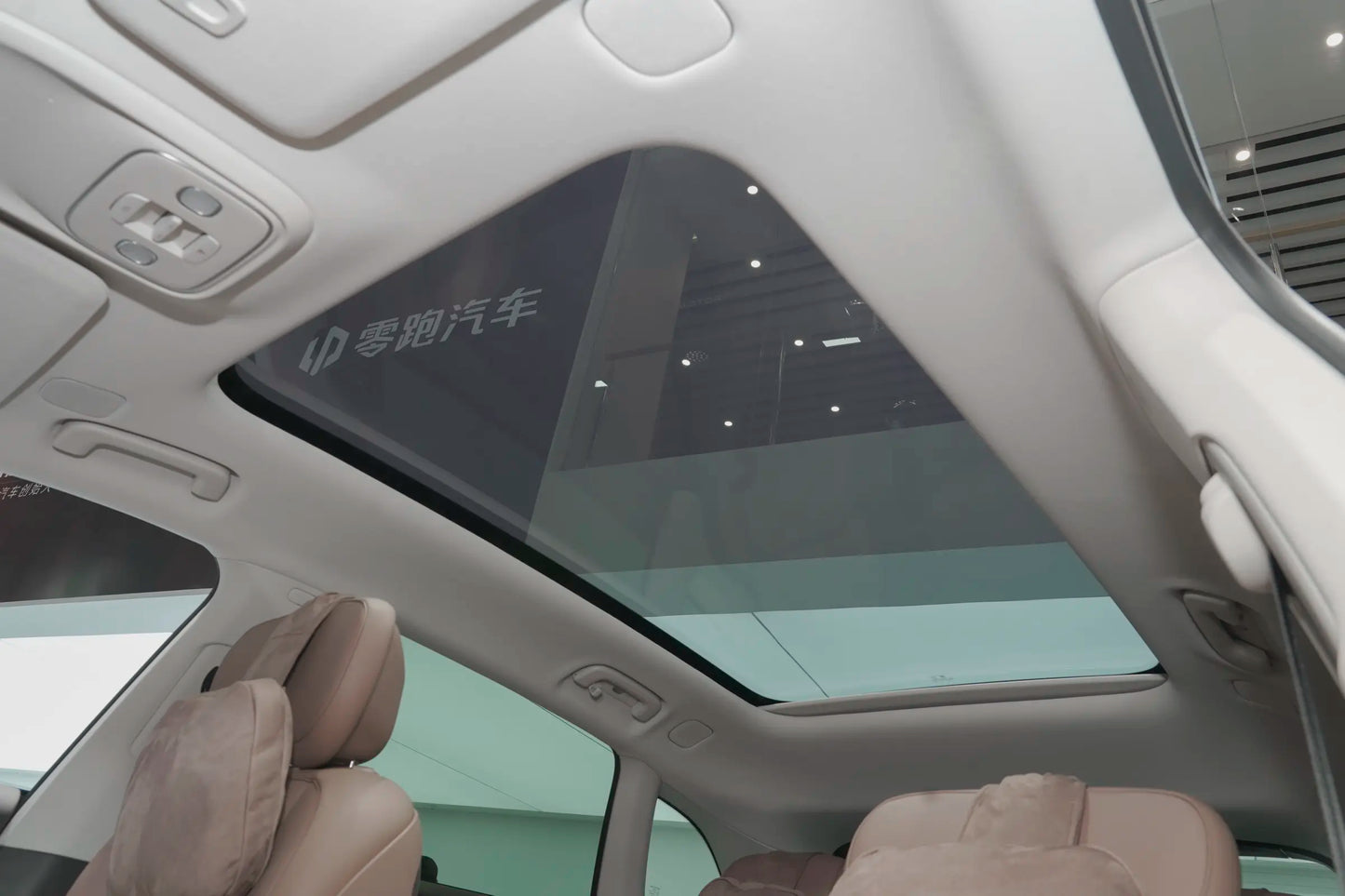
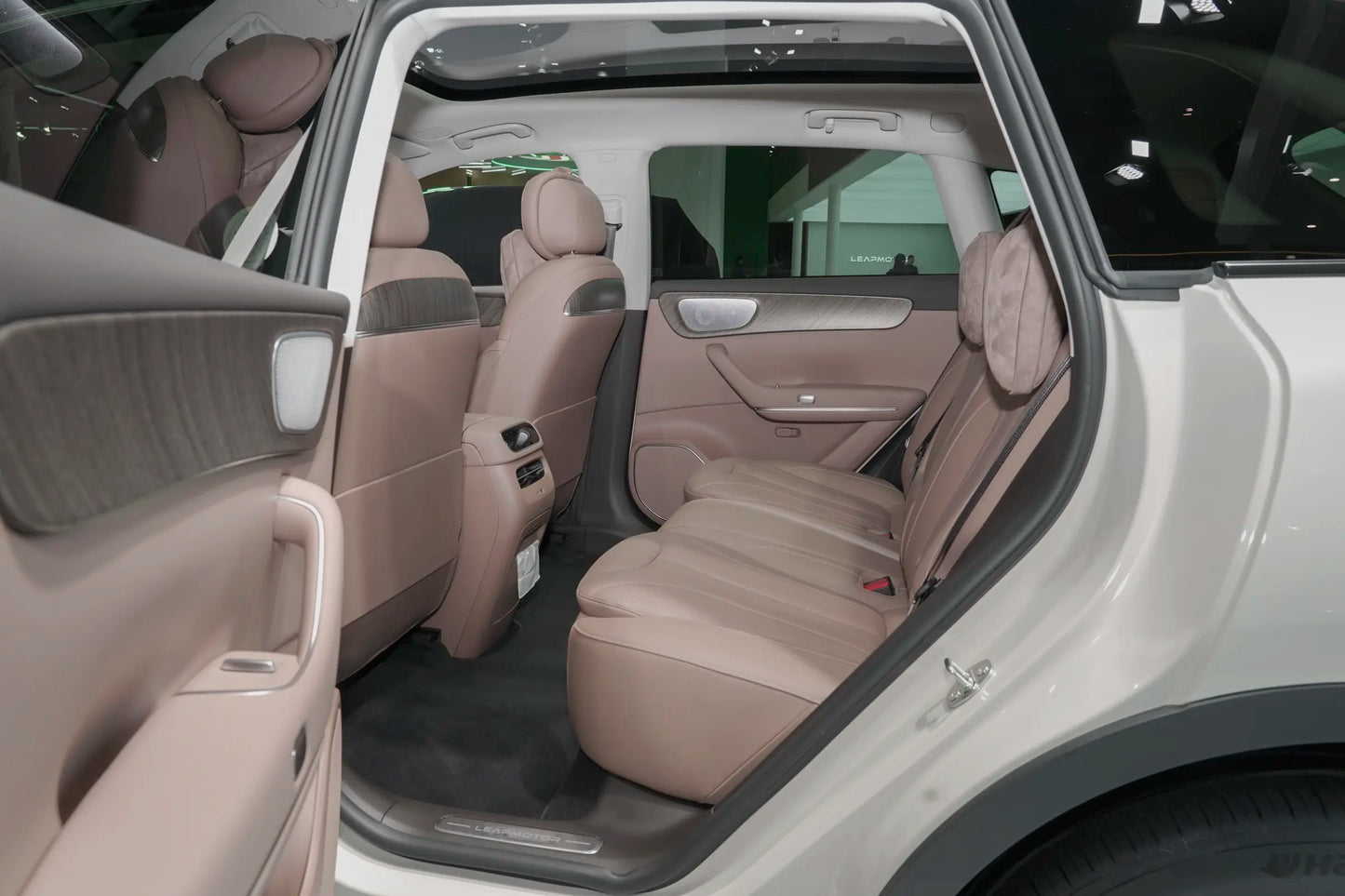
$22,320.00 USD
-
BrandLeapmotor
-
Vechile ClassSUV
-
Energy TypeHybrid REEV
-
Pure Electric Range(KM)200
-
Curb Weight (kg)2030
-
Battery Typelithium iron phosphate battery
-
Total Power of Motor (KW)200
-
Maximum Power(KW)70
-
Total Torque of Motor(N・m)360
-
Maximum Torque(N・m)/
-
Length x Width x Height(mm)4780x1905x1675
-
Official 0-100km/h Acceleration Time(s)7.8
-
Power Consumption(kWh/100km)18.5
-
Equivalent Fuel Consumption (Electricity)(L/100km)2.09
-
Battery Capacity(kWh)30.1
-
MaximumSpeed(km/h)170
-
Motor Layoutrear-mounted
-
Transmissionsingle-speed transmission
-
Displacement(L)1.5
-
Intake Typenaturally aspirated
-
IDre09004
Panoramic Interiors
Video Manual
Authentic on-site shots for an immersive vehicle detail experience
Real Customer Reviews
Source: DCAR
Review A
??There's one thing about the 2026 C11's exterior that I can't accept, and that's its electronic door handles. I don't understand why they didn't make them manual like the C10. Even if they aren't electric, the emergency switch inside isn't obvious enough and its position is problematic. In an emergency, opening the door from the inside isn't very convenient; the switch is in an awkward, upward position and hard to find. I tried it, and it's not easy to open.
¡ðThis time, I also paid special attention to the brake calipers. The fluorescent green color is a bitͻأ, especially with the brown interior version. It feels like the caliper color was sprayed on later.
2??In terms of interior, I think the overall texture is better than the C10, with a touch of luxury. However, the brown interior version paired with wood trim looks a bit old-fashioned. The seat design looks quite premium, somewhat similar to Mercedes-Benz seats, and the leather feels relatively soft. But the leather on the driver's seat developed noticeable wrinkles after I sat in it for a short time. I wonder if it will get worse with long-term use.
3??Space: The space is completely sufficient for daily family use, but there are some things to complain about.
¡ðAfter adjusting the front seats to my driving position, there's still about two fists of legroom in the back, which is objective. The headroom from the sunshade is about one fist, so no problem for daily use. The middle rear seat is completely flat and can be folded down as an armrest when not in use, with a hidden cup holder that can be stored when not needed. However, the child seat anchors in the back are a bit deep and require some effort to open.
¡ðThe trunk space of the C11 pure electric version is quite large, and there's a hollow storage area under the trunk floor, which can easily fit a backpack. Additionally, the two rear seats support a 40/60 split fold, creating a slightly sloped space when folded down. It's not flat enough to lie down directly to sleep; you'll need an air mattress later.
¡ðA downside of the pure electric version: it doesn't have a frunk. That's forgivable, but the biggest problem up front is the hood latch. A light press won't close it; you have to forcefully slam it down to close it in one go. I wonder if other people's cars have similar issues.
4??Features: There are two features that left a deep impression on me: the HUD head-up display and the fragrance system.
1. The overall display clarity of the HUD is acceptable, but on rainy days, when the lights are on, the clarity of the side camera feed is relatively average and not very clear from inside the car. You can experience it for yourself, but you can't ask too much from a 150,000 yuan car.
2. The fragrance system has a good sense of quality and is really rare in cars of the same price range. When you open the door, the whole car smells fresh, especially after comparing with the C10 and C16, which both had some unpleasant odors, while the C11 didn't.
?One complaint about the features: the air conditioning system. When I sat in the second row behind the driver and set the rear AC to 26 degrees with 3 fan levels, I felt obvious vibration from the rear footwell area. But when adjusted to 2 fan levels, this feeling diminished significantly. I tried it again, and it was indeed the case. I don't know if this is an individual case or a common issue.
5??Driving experience: Overall, it doesn't feel as stable as the C16, but the sound insulation is better than I expected.
¢ÙFirst, regarding sound insulation: I later noticed that although it uses frameless doors, they are double-glazed. So both road noise and tire noise are slightly lower than the C16.
¢ÚSteering: The C11 has three steering modes: Comfort, Standard, and Sport. For daily driving, I recommend Comfort mode. It's not too light; it's moderately weighted, making low-speed maneuvering in the city easier. Standard mode is slightly heavier, but you only feel the difference at low speeds. Above 20km/h, there's not much difference between Comfort and Standard. Sport mode is significantly heavier and a bit tiring for daily driving, but it's good for highway driving.
¢ÛPower: There are three acceleration modes: Comfort, Standard, and Sport. Comfort and Standard modes have linear acceleration; even flooring the throttle doesn't produce a particularly strong push. But Sport mode has a noticeable initial push. For daily city driving, Standard mode is sufficient. When you want to overtake, just step a bit deeper on the throttle, and the acceleration picks up noticeably in the latter half.
¢ÜBraking: The C11's brakes are a minor downside, mainly because they aren't linear enough. The transition between regenerative braking and mechanical braking feels unnatural. When driving, when the speed drops to around 40km/h and I lightly press the brake, the deceleration isn't obvious. Pressing a bit harder suddenly hits a braking threshold, causing abrupt deceleration. You can keep pressing to come to a complete stop, but passengers in the back find this braking feel uncomfortable.
¡ðA good thing about the brakes: the nose dive is more natural than the C10; there's no obvious nodding like the C10. When Comfort Braking is enabled, the nose dive is almost imperceptible.
¢ÝChassis: I'm somewhat unsatisfied with the chassis. I think the C11's chassis isn't as stable as the C16's. When going over a single deep manhole cover, the impact transmitted to the seat is quite strong, and the car shakes noticeably.
??Another area where the C11 falls short of the C16 is on rough roads with many gravels and uneven surfaces. The C11 has a noticeable left-right»ζ¯, and the suspension feels bouncy, which I didn't experience in the C10 or C16.
6??Energy consumption: On a rainy day, I drove 9.5km in 35 minutes, and the average energy consumption displayed was 15.1 kWh/100km. This energy consumption level is just average. After all, it's such a big car, so don't have too high expectations.
Review B
¡¾Car Purchase Experience¡¿
As one of the first owners of the mid-range pure electric version of the 2026 C11 facelift, I initially planned to go for the top configuration. However, after a test drive, I found that the HUD wasn't quite suitable for me, so I didn't spend the extra 10,000 yuan on it. Leapmotor really knows how to differentiate configurations precisely¡ªthe mid-range version doesn't even come with ambient lighting. Overall, upgrading to the top configuration for an additional 10,000 yuan is worthwhile, but the mid-range configuration is actually more than adequate. From the perspective of meeting basic needs, I changed my order to the mid-range version.
¡¾Space Performance¡¿
I bought this car mainly for its good looks and spacious interior. When the rear seats are folded down, there's still a slight slope, but with an extension board and a leveling tool for road trips, it can completely double as a large bed. The space in both the front and rear rows, including the trunk, is more than enough for its class. I'm 1.8 meters tall, and lying down with the rear seats folded is quite comfortable¡ªthe space performance is really impressive. There's also a sunken storage area under the trunk floor for small items, which is a nice touch.
¡¾Range and Energy Consumption¡¿
With a complimentary home charger, I have no worries about charging at all. The car's 800V architecture also enables very fast charging. So far, when using fast charging outside, I've reached a maximum power of 185kW, adding 13 kWh in just 5 minutes. For energy consumption: starting with a full charge and topping up 13 kWh halfway, I drove 572 km in a day with three adults in the car, the air conditioning set to 26¡ãC on the 2nd fan speed¡ª420 km on the highway and the rest on national roads. That works out to approximately 15 kWh per 100 km. The dynamic range display is very accurate, and when I calculate using battery capacity, the error is minimal¡ªit's definitely not an optimistically inflated "happy meter." Driving on national roads at around 70 km/h, energy consumption can drop below 10 kWh/100 km. I'm very satisfied with the range and energy consumption performance. Extrapolating from this, it should be able to reach 530-550 km in pure urban conditions and 460-480 km on pure highway driving.
¡¾Driver Assistance¡¿
I took a short road trip and tried out the driver assistance features. Overall, the highway NOA is calibrated to be quite conservative. Lane changes and overtaking are relatively steady, and it will overtake on the right side too. However, it has a strong preference for staying in the middle lane. When entering or exiting ramps, it strictly adheres to the ramp speed limits, which requires manual acceleration to avoid reducing traffic efficiency. The driver assistance system is usable but not particularly user-friendly¡ªit's decent for the price. Currently, it's on par with BYD's DiPilot (TianShen ZhiYan C), maybe even slightly less capable, so there's still significant room for improvement. The energy consumption difference between driving manually on the highway and using NOA isn't significant, so the assistance system performs well in terms of energy efficiency.
¡¾Smart Cockpit¡¿
In terms of the smart cockpit, it definitely outperforms fuel-powered cars by a mile. The overall responsiveness and speed of the infotainment system are excellent, and I haven't encountered any issues with it so far.
¡¾Interior¡¿
Most of the interior surfaces you touch are wrapped in leather. The brown interior has a better texture in person than it appears in pictures or videos. Pairing the brown interior with the beige exterior really elevates its visual appeal and presence.
Review C
I chose an electric car because the main activity is in the city and there's no need to shake for a license plate. Among similar models, I first ruled out established car companies like BYD because I find their infotainment systems and exteriors a bit unacceptable.
At that time, I also compared the Zeekr 7X, XPeng G7, and Xiaomi YU7. The Zeekr drives steadily with good texture, somewhat like a premium version of the C11; XPeng has excellent intelligent driving, but lacks a sunshade on the roof, which looks very bad in summer; Xiaomi has high popularity and a resilient chassis, but I can't wait for its delivery. After much selection, the C11 has a friendly cost-performance ratio.
Waiting for the car is what I want to complain about the most. I placed a large order at the press conference, and waited a month for the rice exterior and brown interior. Seeing others pick up their black exterior and black interior cars super fast, some even got them off the shelf. I can't really understand Leapmotor's production scheduling logic; it's completely opaque, and what the salesperson says sometimes doesn't match the App progress... I suggest everyone´òÌý more about color combinations before ordering. If you really want to pick up the car early, don'tÈÎÐÔ chooseÀäÃÅ color schemes.
I've driven quite a lot in the urban area so far, and I'm overall satisfied with the car. The space is sufficient, both front and rear rows are spacious, and the storage is practical. Many functions of the infotainment system are not explained and have to be explored by oneself.
There's a custom button on the steering wheel which is particularly convenient. I set it to single-click to turn on 360-degree camera + double-click to adjust the rearview mirrors. There's also a custom button on the head, which I set to open the window by default. Letting car owners customize these is very convenient.
For charging, I found a 750v fast charging pile. It takes about half an hour to charge from 30% to 90%. In terms of power consumption, I drove 343 km and consumed 59 kwh, which is about a 73% discount (my wife thinks the new car has an odor, so I open the windows and turn on the air conditioning for ventilation at the same time, so the air conditioning energy consumption accounts for a high proportion). With the air conditioning on, listening to music and driving normally, the energy consumption is not high, and it's quite economical for home use.
The chassis is on the softer side (Zeekr 7X is more integrated, C11 feels closer to G7), but the road feel underfoot is clear. It's stable when cornering, but the bumps over potholes are transmitted obviously. When the regenerative braking is turned down, it's basically like a fuel car. The initial stage of the brake is slightly soft, but it's fine once you get used to it. The sound insulation is okay in the urban area, but I haven't tested it on the highway yet. The air conditioning has a large air volume, but it's a bit noisy when turned to high. The new car has a slight smell, not sure if all leather is like this. Anyway, my wife always feels uncomfortable. After ventilating for a while, it's much better now.











